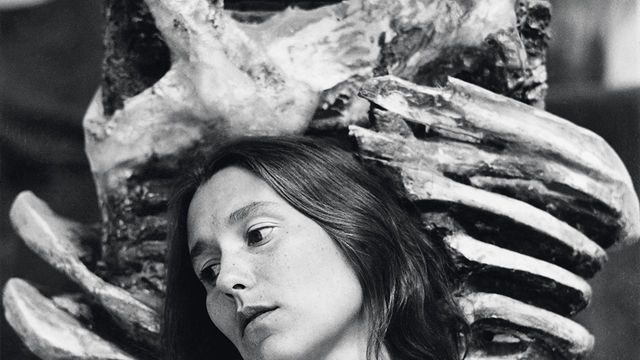
Johanna Hamann
The sculptor and sculpture historian Johanna Hamann was born in 1954 in Lima. Her uncle Juan Manuel Ugarte Eléspuru (1911–2004) was one of the most prominent painters and educators of mid-twentieth-century Peru. Between 1971 and 1976 Hamann studied at the Escuela de Artes Plásticas, Pontificia Universidad Católica del Perú (PUCP), in Lima, with the Italian sculptor Anna Maccagno (1918–2001); the Austrian painter Adolfo Winternitz (1906–1993), who founded the school; and the Peruvian abstract painter Julia Navarrete (b. 1938). Early in her career Hamann won sculpture competitions for religious commissions: in 1974 for the tabernacle of the Church of Our Lord of Muruhuay in Tarma, Peru, and in 1979 for the nearly ten-foot-high wooden cross for PUCP's chapel. In 1977 Hamann had her first and only child with her husband, the painter Ricardo Wiesse Rebagliati (b. 1954), a life event that shaped her first solo exhibition, at the Galería Fórum in Lima in 1983. Sculptures in the exhibition asserted Hamann's mature style. Based on a systematic examination of human anatomy from life and in Limeño morgues, her fragmented bodies seemed to have been turned inside out or stripped of muscle. Also in 1983 the artist represented Peru at the Bienal de San Juan del Grabado Latinoamericano and in Havana at the exhibition Arte joven peruano.
In the second half of the 1990s, starting with the 1997 exhibition Cuerpo blasonado, Hamann's figures became more naturalistic. She continued, however, to present human bodies under extreme duress, reflective perhaps of the self-sacrifice inherent both in religious faith and in women's lives. In the early 2000s Hamann was included in historical exhibitions surveying art produced during Peru's internal conflict (1980–2000), including La generación del ochenta: Los años de la violencia (2004) and Urbe y arte: Imaginarios de Lima en transformación, 1980–2005 (2006), which highlighted the social implications of her work. Hamann began teaching at PUCP in 1984, first as an adjunct instructor and later as a sculpture professor before becoming chair of the art department. In her academic capacity she organized multiple symposia and publications on the history of sculpture and public space in Peru, including a volume dedicated to Maccagno. In 2005 she obtained a master's degree in the humanities from PUCP and in 2011 a PhD from the Universidad de Barcelona with the dissertation "Monumentos públicos en espacios urbanos de Lima, 1919–1930." In 2015 she published Leguía: El centenario y sus monumentos, Lima, 1919–1930. Her work can be found in the collections of the Museo de Arte de Lima and PUCP and in many private collections. She died in 2017.
—Dorota Bizcel
Selected Solo Exhibitions
1983 Johanna Hamann, Galería Fórum, Lima
1991 Johanna Hamann: Esculturas y dibujos, Galería de la Municipalidad de Miraflores, Lima
1997 Antológica (1983–1991), Casa de Nicolás Ribera El Viejo, 1st Bienal Iberoamericana de Lima
2000 Cuerpo, frágil refugio, Galería de la Municipalidad de Miraflores, Lima
2016 Johanna Hamann: Antológica, 1977–2015, Galería Germán Krüger Espantoso, Lima
Selected Bibliography
Jarque, Fietta. "Johanna Hamann: El perfil de lo intacto." Hueso Húmero 18 (July–September 1983): 163–67.
Johanna Hamann: Esculturas. Lima: Pontificia Universidad Católica del Perú, 1997.
Johanna Hamann: Ese nudo sutil. Lima: Forma e Imagen, 2014.
Lerner, Sharon, et al. Johanna Hamann: Antológica, 1977–2015. Lima: Instituto Cultural Peruano Norteamericano, 2016.
Mac Lean, Guillermo. Entrevistas: 50 Sculptors in Steel; Asia, United States, Europe, Africa, Latin America. Mexico: Fundación Cívico Cultural, 2009.


